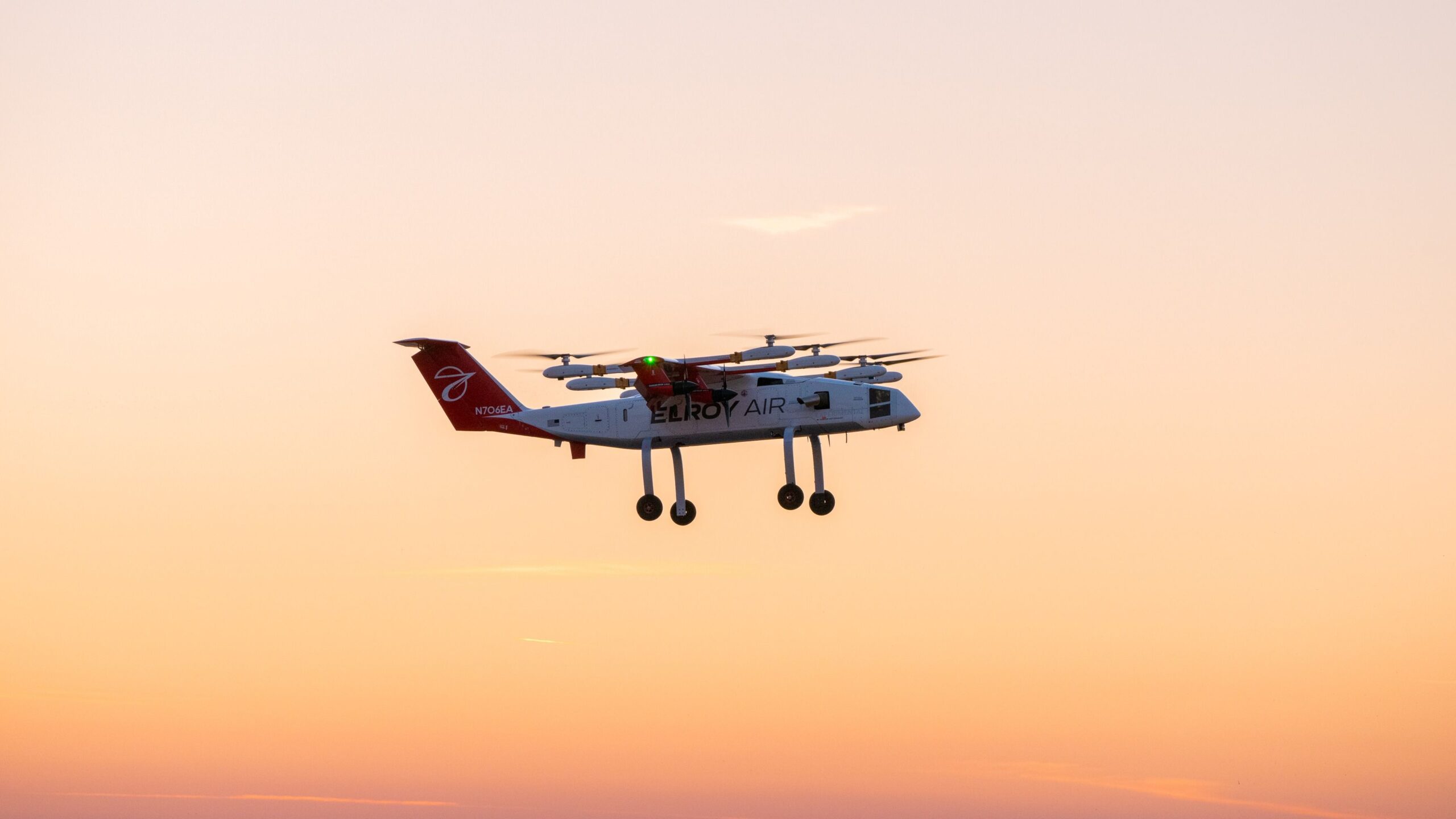Summary
- Elroy Air’s Chaparral C1 cargo drone successfully completed its first flight, marking a significant milestone for the hybrid electric hVTOL aircraft.
- The Chaparral C1 is capable of lifting 500 lb payloads over distances of 250 nautical miles, making it more powerful than other drones used for last-mile delivery services.
- Elroy Air has generated a backlog of orders exceeding $3 billion for the Chaparral C1, with over 1000 aircraft requested by customers, indicating strong demand for this type of cargo drone in the future.
Elroy Air completed the first flight of the Chaparral C1 cargo drone at Bryon Airport outside of San Francisco on November 12. The first flight of the hybrid electric vertical takeoff and landing (hVTOL) Chaparral C1 lasted 57 seconds, hovering above the California desert before landing. The first flight is the most significant milestone yet for the Chaparral C1 after the aircraft was first announced 22 months ago.
The Chaparral C1 is capable of lifting 500 lb (226 kg) distances of 250 nautical miles, making it able to lift about twenty times more payload than the Watts Innovation PrismSky that DroneUp uses for last-mile drone delivery services for Walmart.
With the first flight, the Chaparral C1 has become the first turbogenerator-hybrid electric hVTOL and the second-largest unmanned cargo aircraft for commercial cargo operations to take flight in North America, behind the 829 lb capable Saberwing’s Rhaegal-A, which had its first flight last year. Kofi Asante, Vice President of Strategy for Elroy, told Simple Flying that the company is focused on future test flights.
“Flight happened earlier than expected and was very stable,” Asante said. “We have contracts with the Air Force that will pay us for flight data, so we will be flying for customers as our next path.”
About the Chaparral C1
The Chaparral C1 has twelve motors: eight for vertical flights and four motors facing the front for conventional flight. The C1’s turbo-generator provides power to the Chaparral’s electric batteries, which in turn power the aircraft’s electric motors in cruise.
Elroy’s Chaparral C1 is part of a growing number of cargo drones that could revolutionize the logistics industry in the coming decade.
Photo: Elroy Air
The C1 has since generated a backlog of orders, memorandums of understanding, and letters of intent exceeding $3 billion dollars, according to the company. This backlog includes the world’s largest helicopter operator, Bristow Group, replacing costly helicopter service to its customers on offshore oil rigs, aircraft lessor LCI, and FedEx.
“We have over 1000 aircraft in backlog from customers right now, so we will be refining our aircraft and getting ready for deliveries over the next few years to meet demand,” Asante said.
Development and Certification
During the development of the Chaparral C1, Elroy partnered with FedEx for testing of the aircraft. Like many other companies in the unmanned aircraft system industry, Elroy has also worked with the United States Air Force since 2019, taking advantage of the Department of Defenses drone technology startup programs like AFWERX and earning multiple contracts with the Air Force to develop the aircraft.
After the first flight, the former US Secretary of Defense and current Elroy Air Board member Mark Esper said that the first flight was an “exciting milestone” and “[Elroy’s] work to enable autonomous cargo delivery for the resupply of troops in the field will create a game-changing capability for supporting and sustaining the United States military and allied forces in future campaigns.”
Chaparral C1 is built for middle-mile logistics; unlike traditional cargo aircraft, the C1 is able to land at off-airport facilities such as warehouses and distribution centers. The aircraft features a detachable cargo pod, which is designed to unload and load the aircraft quickly for efficient turnaround times.
While Chaparral’s first flight will be followed by more test flights to demonstrate the capabilities of the aircraft’s hover system and eventual transitions to cruise flight, there’s still much work to be done before it can be delivered to customers. It will need to become type-certified by the US Federal Aviation Administration (FAA), a process that is notoriously long and has come under fire for its slowness in the past.
Photo: Matternet
Matternet’s M2, a light drone capable of carrying 4 lbs of cargo, was the first cargo drone to become type-certified in 2022. UPS has utilized the Matternet M2 in experimental delivery routes between healthcare centers. Meanwhile, companies in Europe, like London-based Dronamics, completed the first flight of their conventional middle-mile unmanned aircraft in May of this year and hope to bring delivery to the United States in 2025.



